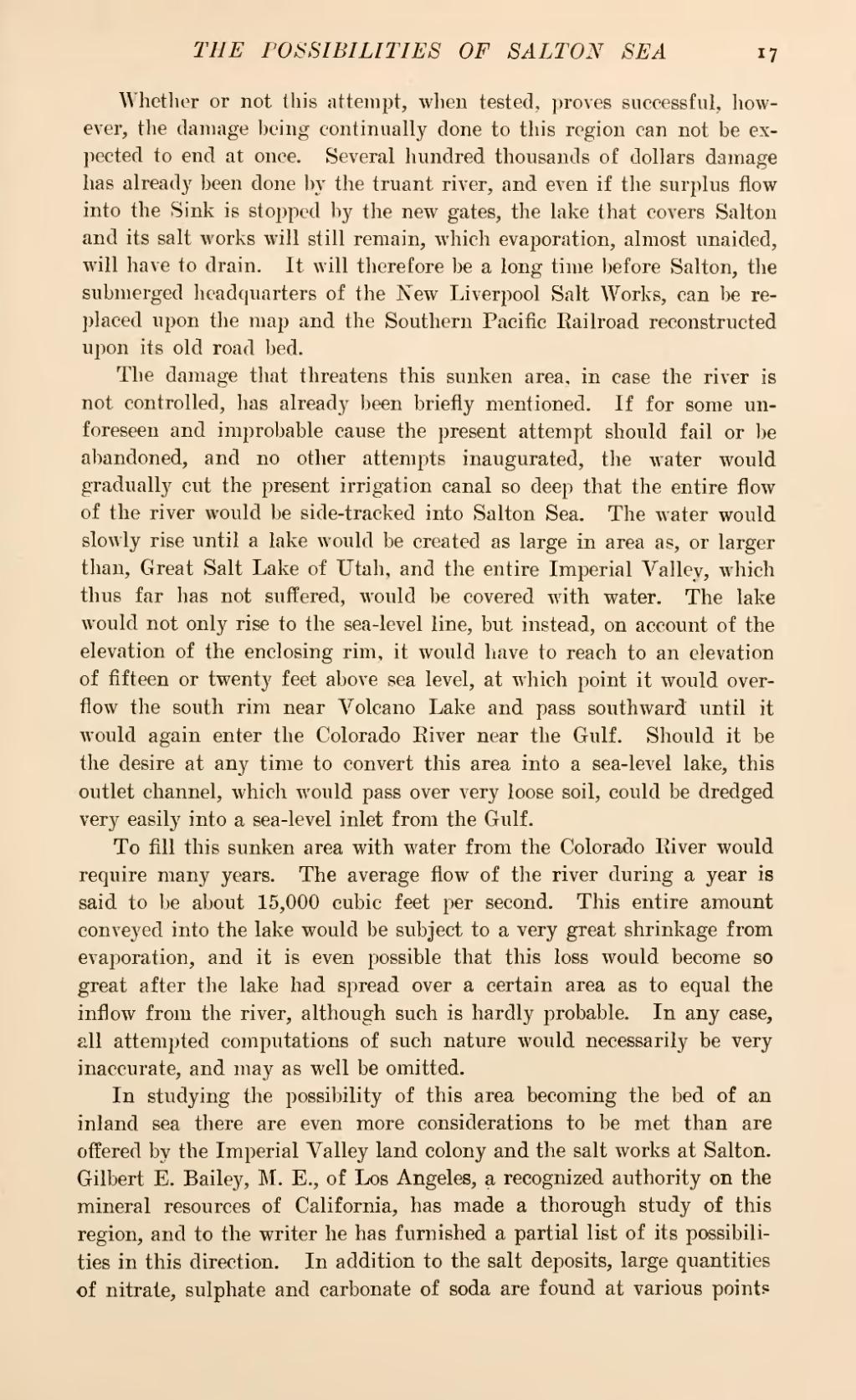Whether or not this attempt, when tested, proves successful, however, the damage being continually done to this region can not be expected to end at once. Several hundred thousands of dollars damage has already been done by the truant river, and even if the surplus flow into the Sink is stopped by the new gates, the lake that covers Salton and its salt works will still remain, which evaporation, almost unaided, will have to drain. It will therefore be a long time before Salton, the submerged headquarters of the New Liverpool Salt Works, can be replaced upon the map and the Southern Pacific Railroad reconstructed upon its old road bed.
The damage that threatens this sunken area, in case the river is not controlled, has already been briefly mentioned. If for some unforeseen and improbable cause the present attempt should fail or be abandoned, and no other attempts inaugurated, the water would gradually cut the present irrigation canal so deep that the entire flow of the river would be side-tracked into Salton Sea. The water would slowly rise until a lake would be created as large in area as, or larger than, Great Salt Lake of Utah, and the entire Imperial Valley, which thus far has not suffered, would be covered with water. The lake would not only rise to the sea-level line, but instead, on account of the elevation of the enclosing rim, it would have to reach to an elevation of fifteen or twenty feet above sea level, at which point it would overflow the south rim near Volcano Lake and pass southward until it would again enter the Colorado River near the Gulf. Should it be the desire at any time to convert this area into a sea-level lake, this outlet channel, which would pass over very loose soil, could be dredged very easily into a sea-level inlet from the Gulf.
To fill this sunken area with water from the Colorado River would require many years. The average flow of the river during a year is said to be about 15,000 cubic feet per second. This entire amount conveyed into the lake would be subject to a very great shrinkage from evaporation, and it is even possible that this loss would become so great after the lake had spread over a certain area as to equal the inflow from the river, although such is hardly probable. In any case, all attempted computations of such nature would necessarily be very inaccurate, and may as well be omitted.
In studying the possibility of this area becoming the bed of an inland sea there are even more considerations to be met than are offered by the Imperial Valley land colony and the salt works at Salton. Gilbert E. Bailey, M. E., of Los Angeles, a recognized authority on the mineral resources of California, has made a thorough study of this region, and to the writer he has furnished a partial list of its possibilities in this direction. In addition to the salt deposits, large quantities of nitrate, sulphate and carbonate of soda are found at various points

